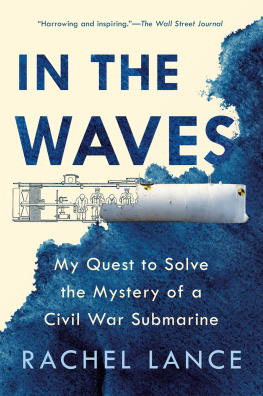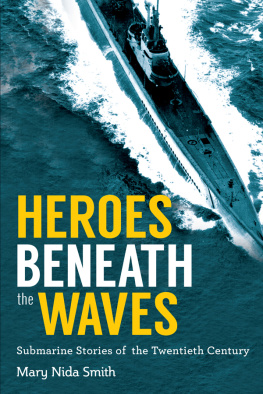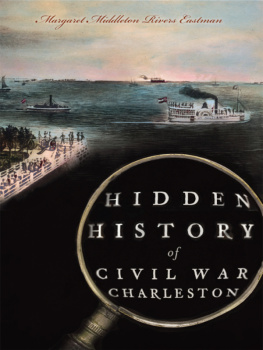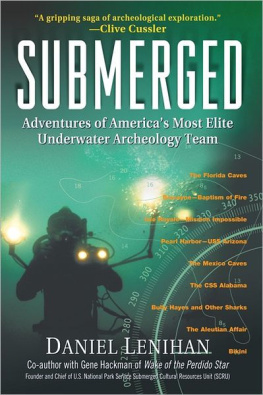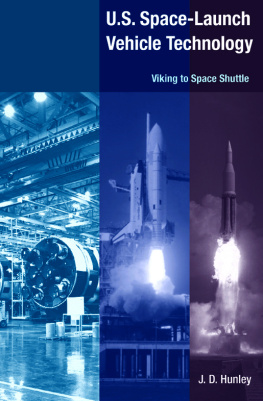

Table of Contents
For the pioneers
After the chassepots came the torpedoes, after the torpedoes came the submarine rams, thenthe reaction.
JULES VERNE, TWENTY THOUSAND LEAGUES UNDER THE SEA
No news of the torpedo boat.
TELEGRAM FROM CHARLESTON
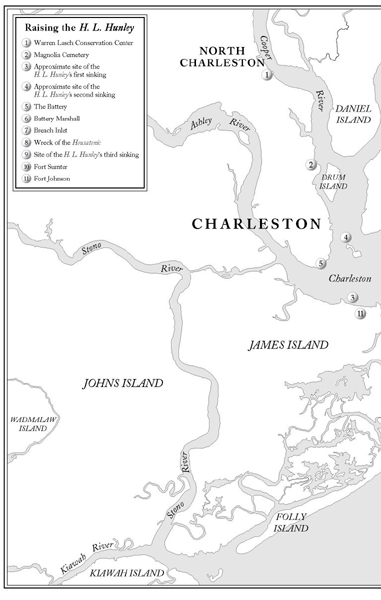
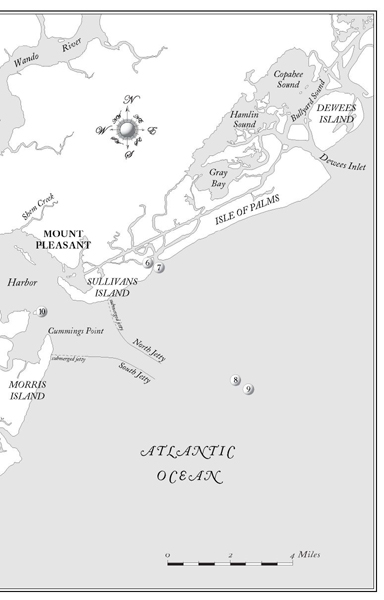
ACKNOWLEDGMENTS
NO BOOK THAT SPANS THISMANY YEARSAND TOUCHES this many lives can be done alone. We were fortunate to follow this story in our role as journalists and to have the help of dozens of people, many of whom spent hours re-creating important scenes from their lives, explaining the intricacies of engineering and archaeology, or finding some document that we just knew was out there somewhere.
First, we would like to thank Sen. Glenn McConnell and Warren Lasch, chairmen, respectively, of the Hunley Commission and Friends of the Hunley, for giving us unparalleled assistance and access during the recovery and excavation of the H. L. Hunley. McConnell opened the files of the Hunley Commission to us and took the time to point out all of the most intriguing tidbits in that vast repository. The senator has an unquenchable dedication to and enthusiasm for the Hunley.
Lasch is the man who made things happen, who delivered on every promise, and who said yes when all others said no. Thanks for important views inside the submarine, of Lt. George E. Dixons gold coin and everything else. Warren, its always a pleasure.
We would also like to thank the folks at the lab, including Dr. Robert Neyland, Paul Mardikian, Maria Jacobsen, Harry Pecorelli III, Shea McLean, and Darlene Russo. Cramer Gallimore, who shot many of the Friends of the Hunley photographs in this book, was exceptionally helpful. All of these people were gracious with time they didnt really have. Thanks especially to Dr. Bob for the daily chats. At Friends of the Hunley, we also are indebted to Cindy Elenberger, Kellen Butler, and Mark Regalbuto. John P. Hazzard V of the Hunley Commission was of great help, as was Ms. Beckie Gunter, our heroine in Columbia.
Clive Cussler and the rest of the sea hunters were fabulous including the NUMA (National Underwater and Marine Agency) team that was ultimately credited with discovering the Hunley: Ralph Wilbanks, Wes Hall, and the aforementioned, ever-humble, all-around great guy Harry Pecorelli III. His Authorship was kind enough to read the manuscript of this book twice, while Wilbanks, Hall, and Pecorelli all sat for hours-long interviews. Veni, vidi, vici, dudes.
Lee Spence and Mark Newell were kind enough to share their recollections and observations with us, even as they fought uphill battles to prove their claims. We were happy to tell their sides of the story. Steve Wright and Leonard Whitlock were extremely patient and helpful in explaining the engineering behind the lift. We also owe much to Randy Burbage and the dedicated men and women who reenact Civil War battles, ensuring that no one ever forgets. Also, the staff archaeologists at the National Park Service Submerged Cultural Resources Unit, Rick Hatcher at Fort Sumter, Chris Amer and Jonathan Leader of the South Carolina Institute of Archaeology and Anthropology, and their staff members were most kind. The U.S. Coast Guard Group Charleston, the U.S. Navy, the Naval Historical Center, the National Archives, and the Submarine Force Museum in Groton, Connecticut, also provided technical assistance. Jamie Downs, John Downs, John Hunley, Charlie Peery, Carole Bartholomeaux, Colleen Nelson, Bill Albergotti, Richard Cleeve, Jr., Andrew Nash, R. Theodor Kusiolek, and Darren Milford also paved our way. Jenkins Montgomery of Titan Maritime Industries shared his story along with venison hamburgers. And for financial assistance during the writing of this book, wed like to thank the guys at the weekly chapel meetingFred, Tom, Bryce, Mic, Robert, Tony, and especially Arlie.
It was an honor and a privilege to come to know the few surviving family members of the people involved in this story. Mary Elizabeth McMahonthe great-great-granddaughter of Hunley crewman James Wicksand her sister-in-law, Hope Barker, were great sources of information and inspiration, and good friends. For the use of the Queenie Bennett photo, thanks to Sally Necessary, the great-granddaughter of Bennett, from whose hand passed the gold coin.
The librarians helped us sleuth out all these facts, especially Suzanne Henderson of The Post and Couriers library, Charlotte Chamberlain of the Mobile Public Library, and the staffs at the Charleston and New Orleans public libraries. At the Museum of Mobile, Joan Layne and Chuck Torrey were especially kind, as was Dr. Bill Meneray in the Howard-Tilton Memorial Library of Tulane University in New Orleans. We made great discoveries at the Louisiana Historical Society and the South Carolina Historical Societyboth of which are staffed by knowledgeable, courteous people.
For reading this manuscript in its earliest forms, we are forever indebted to the great novelist and editor Steve Knickmeyer, who does not suffer substandard prose. Jan Snouck-Hurgronje, president of the Nautical & Aviation Publishing Company of America, did many things to shepherd this book along, not the least of which was to offer valuable editing tips. Tracy Brown at Ballantine Books has been a great and patient editor, diplomatically making wise suggestions and answering all 861 E-mails with which we bombarded himweekly. Thanks also to Nancy Delia for making this book come together seamlessly and to Susan Cohan for knowing what we really meant to say.
We are extremely grateful to the editors of The Post and Courier , who allowed us to cover the amazing story of the Hunley, in particular Barbara Williams, John Huff, Steve Mullins, and the late Grace Kutkus, who was a very special person. An extra nod goes to The P&Cs publisher, Larry Tarleton, for giving us the blue light to write this book. Thanks, LT.
We are grateful to our families for their encouragement, including Tish and Charles Kropf and the entire extended Kropf network. You are valuedMom, especially, for keeping Grandfathers submarine service dolphins framed and ever present in our household, and Tracey OBrien for just being there always. We are thankful for the moral support and kind words of Larry Hicks, Judy Spangler, Alan and Donna Spears, as well as Bill and Mary Ellen Spears, who provided shelter, great food, and better conversation for a traveling researcher. Beth Hicks deserves her name on this book as much as anyone, for reading countless early (and bad) versions of the manuscript, repairing the computer, watching the energetic Cole Hicks, taking photographs, and making sure the rest of the world continued to spin as this book was being written. You are simply the best.
And finally, we owe our greatest appreciation to Dan Conover, for the nudge.
Brian Hicks and Schuyler Kropf
Charleston
August 8, 2001
THE THREE CREWS OF THE CONFEDERATE SUBMARINE H. L. HUNLEY
FIRST CREW
Lost August 29, 1863, during training mission in Charleston Harbor
Next page

